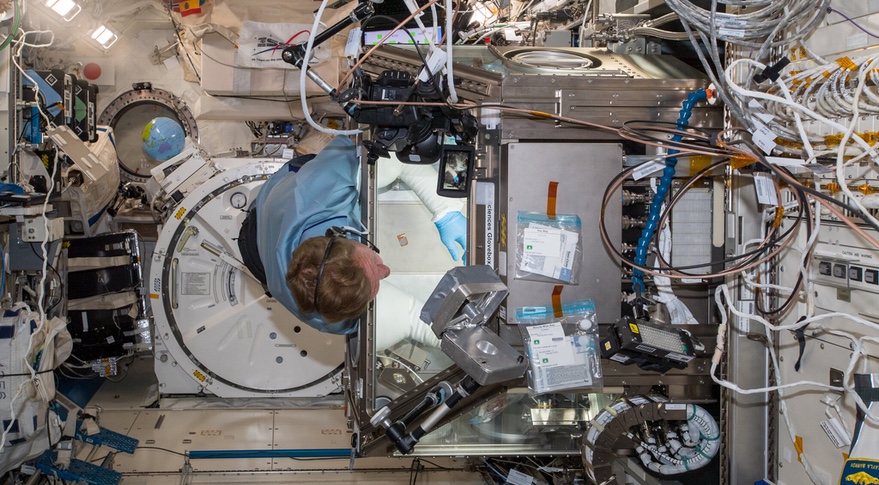WASHINGTON — A NASA science division is seeking funding for a program that could fly scientists to the International Space Station on private missions to conduct research that could then be handed off to NASA astronauts.
In a presentation at a July 13 meeting of a National Academies committee working on the decadal survey for biological and physical sciences research in space, Craig Kundrot, director of the NASA’s biological and physical sciences division, said the agency is seeking funding starting in fiscal year 2023 for an initiative that could allow “hyper-specialized” scientists go to the ISS and future commercial space stations.
“We seek to bring scientists back into space,” he said, drawing parallels to payload specialists who flew on shuttle missions. Those non-career astronauts included scientists and engineers who flew on missions to conduct research. One, Charlie Walker, flew on three shuttle missions running microgravity experiments for his employer, McDonnell Douglas.
“We are envisioning a different version of that now that we have, in this evolving, emerging commercial world, the private astronaut mission capability,” he said. “We seek to use that to fly hyper-specialized scientists to do research in LEO that is really very hard for even the most closely trained astronaut in that field to do.”
The initiative, called Commercially Enabled Rapid Space Science, or CERISS, will start with requests for information (RFIs), he said. One RFI will ask companies for what research capabilities they have or are developing for use in low Earth orbit. A second RFI will ask researchers to determine what areas would benefit from having scientists conducting the research themselves in orbit.
NASA will then fund proposals to develop and test research hardware and analysis capabilities, based on the feedback from the RFIs. That would be followed by grants to conduct research using those capabilities, including flying scientists to the ISS.
NASA’s current ISS commercialization policy allows two private astronaut missions, or PAMs, a year to the ISS for up to 30 days at a time. Kundrot said one possibility was to have scientists flying on commercial missions to the ISS work with NASA astronauts in a sort of “buddy system,” training the professional astronaut to continue the research after the scientist departs.
“Our astronaut corps at NASA is really talented, and there are increasingly trained scientists in the corps,” he said. “But when you get down to specific areas of research, many of them on the cutting edge, very few people are familiar with those systems, those techniques, et cetera. In those cases, it would make sense to fly a hyper-specialized scientist for up to 30 days on a PAM mission.”
“One of the concepts we’re kicking around is developing a NASA buddy system,” he said. In that scenario, the scientist goes to the ISS on a private mission do conduct research. “During that time, the investigator is working hand-in-glove with a NASA astronaut who is learning at their side, and when the normal terrestrial researcher returns back to the ground, the NASA buddy can continue the work.”
Kundrot said NASA is seeking funding for CERISS as part of its fiscal year 2023 budget proposal, although the agency did not mention the initiative in its full budget justification document. An “exceedingly notional” budget he presented at the meeting would start with less than $10 million in fiscal year 2023, growing to about $25 million by 2028. That would allow scientist astronaut missions to begin as soon as 2026.
CERISS would take advantage of a requested budget increase for biological and physical sciences at NASA. That division received $82.5 million in fiscal year 2022 but is seeking $100.4 million for 2023, growing to $108.4 million by 2027. The 2022 funding would serve as a base to support existing research, with the projected growth supporting CERISS.
Kundrot said that flying scientists on commercial missions could accelerate the pace of research because the scientist will be present on the station, rather than waiting for results of experiments performed on the station to be returned to Earth for analysis. “In some disciplines,” he said, “this could easily produce a factor of 10-fold increase in speed of research, and even 100-fold.”
